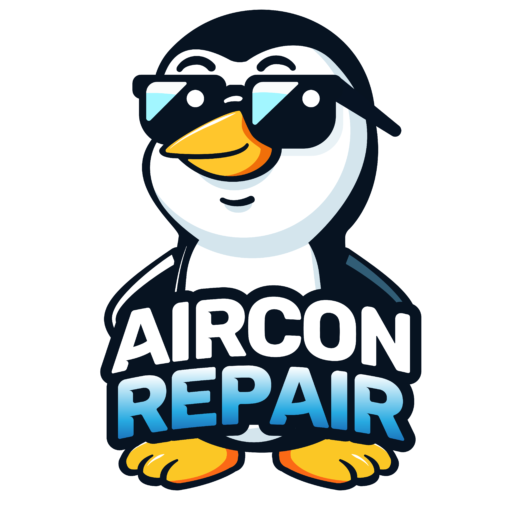Maintaining the right temperature and humidity in an HVAC system is crucial for comfort, energy efficiency, and indoor air quality. Poor climate control can lead to discomfort, higher energy bills, and even mold growth. To achieve optimal conditions, it’s essential to balance cooling, heating, and ventilation while ensuring proper maintenance of your HVAC unit. Regular filter changes, thermostat adjustments, and humidity control devices can help regulate indoor conditions effectively. Whether you’re dealing with excessive humidity or dry air, understanding how your HVAC system functions can make a significant difference. Here’s a guide to keeping your system running at peak performance.
Why Temperature and Humidity Control Matters
Balancing temperature and humidity in an HVAC system is essential for several reasons:
- Indoor Air Quality (IAQ): Proper humidity levels prevent mold, mildew, and allergens from spreading.
- Energy Efficiency: Maintaining a stable temperature reduces strain on your HVAC system and lowers energy costs.
- Health and Comfort: Too much humidity can cause damp conditions, while low humidity can dry out your skin and respiratory system.
- Equipment Longevity: Avoiding extreme temperature fluctuations reduces wear and tear on your HVAC components.
1. Set the Right Temperature for Comfort and Efficiency
Your HVAC system should maintain an optimal temperature range to ensure both comfort and efficiency:
- Cooling Mode: Set your thermostat between 72°F and 78°F during summer months.
- Heating Mode: Keep it between 68°F and 72°F in winter.
Tips for Consistent Temperature Control
- Use a Smart Thermostat: A programmable or smart thermostat helps regulate temperatures automatically, optimizing energy use.
- Avoid Frequent Adjustments: Constant changes in thermostat settings make your HVAC system work harder, leading to increased energy consumption.
- Utilize Ceiling Fans: Fans help distribute air evenly, reducing the need to overwork your HVAC system.
2. Control Humidity Levels for a Balanced Indoor Climate
Humidity plays a significant role in indoor air quality and HVAC performance. The ideal indoor humidity level should range between 30% and 50% to prevent mold growth and discomfort.
How to Manage Humidity Effectively
- Install a Whole-Home Dehumidifier: If you live in a humid climate, a dehumidifier helps maintain a balanced indoor environment by removing excess moisture.
- Use a Humidifier in Dry Climates: In arid regions, such as Las Vegas, a humidifier prevents excessively dry air that can cause respiratory issues and static electricity.
- Ensure Proper Ventilation: Kitchens, bathrooms, and laundry rooms should have adequate ventilation to expel excess moisture.
- Monitor Humidity Levels: Use a hygrometer to track indoor humidity and make necessary adjustments.
3. Improve Airflow and Filtration for Optimal Performance
Proper airflow and filtration help your HVAC system maintain the right temperature and humidity levels while improving indoor air quality.
Steps to Enhance Airflow and Filtration
- Change HVAC Filters Regularly: Replace or clean air filters every 1-3 months to prevent dust and debris buildup.
- Keep Air Vents Unobstructed: Ensure that furniture and curtains do not block vents, allowing air to circulate freely.
- Seal Ductwork: Leaky ducts can cause uneven temperatures and humidity issues. Inspect and seal ducts to prevent energy loss.
4. Schedule Regular HVAC Maintenance for Peak Efficiency
Routine maintenance is essential for keeping your HVAC system running efficiently while maintaining ideal temperature and humidity levels.
Key Maintenance Tasks
- Inspect and Clean Coils: Dirty evaporator and condenser coils reduce efficiency and impact humidity control.
- Check Refrigerant Levels: Low refrigerant can cause your AC to struggle with cooling and dehumidifying.
- Schedule Professional Inspections: Have an HVAC specialist conduct seasonal tune-ups to detect and fix issues before they escalate.
5. Upgrade Your HVAC System for Better Temperature and Humidity Control
If your current HVAC system struggles to maintain consistent temperature and humidity, upgrading to a modern, energy-efficient unit can make a significant difference.
Recommended Upgrades
- Variable-Speed HVAC Systems: These adjust airflow and humidity levels automatically for enhanced comfort and efficiency.
- Zoning Systems: Control different areas of your home independently, reducing energy waste and improving temperature consistency.
- Energy-Efficient HVAC Models: Investing in an ENERGY STAR®-rated system ensures optimal performance and lower utility bills.
Conclusion
Maintaining the right temperature and humidity in your HVAC system is essential for comfort, energy efficiency, and indoor air quality. By setting optimal thermostat levels, managing humidity with the right equipment, ensuring proper airflow, and keeping up with routine maintenance, you can create a balanced indoor climate while extending the lifespan of your HVAC system. Whether you’re dealing with excess humidity, dry air, or fluctuating temperatures, proactive HVAC care helps prevent costly repairs and enhances overall home comfort. For long-term efficiency, consider upgrading to a modern HVAC system designed to optimize temperature and humidity control. Stay ahead of potential issues with regular inspections, and enjoy a healthier, more comfortable indoor environment year-round.
